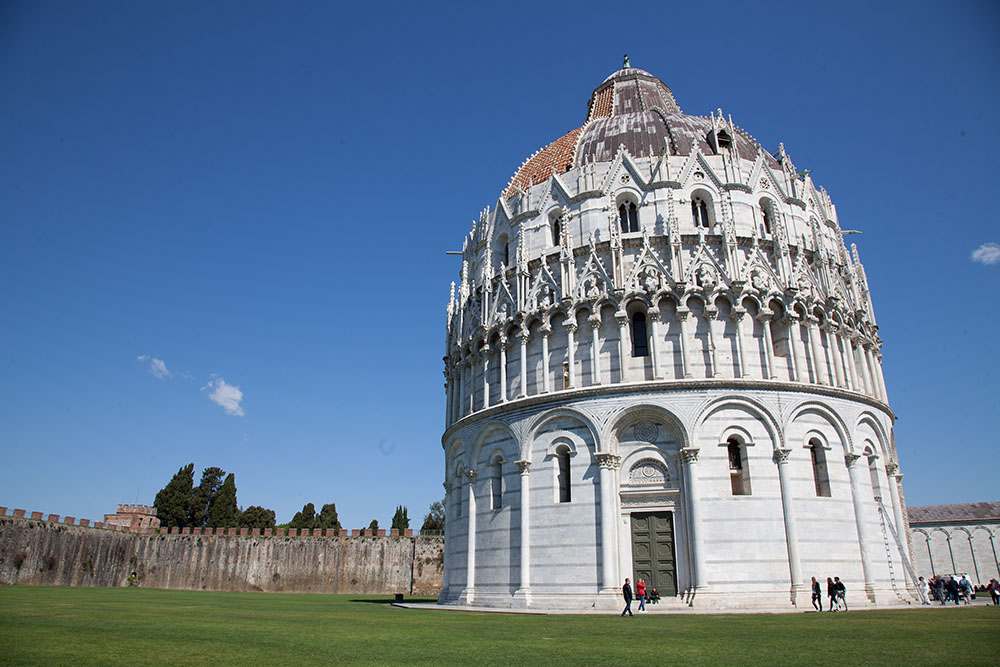The Baptistery of Pisa, majestic and imposing, is one of the architectural jewels of the Piazza dei Miracoli (Square of Miracles), a work of art that unites history, faith, and engineering. The building, a large rotunda, was conceived to be the place where Pisan citizens were born into Christian and civic life.
The construction of the Baptistery
The construction of the Pisa Baptistery began in the middle of the 12th century, but continued until the end of the 14th century. The Pisans, inspired by the Rotunda (Anástasis) erected by the Emperor Constantine over the tomb of Christ in Jerusalem, wanted to give their Baptistery the same circular shape. This choice was not accidental: it symbolizes, in fact, the death of the old man (marked by sin) and his resurrection with Christ to new life, a central concept in the baptismal rite. On the exterior, the richness and variety of the decoration testify to the long period of construction and the stylistic changes, moving from the Romanesque of the lower register to the Gothic of the upper ones. The compact wall of the first register is softened by blind arches, while above rises an elegant colonnade and a series of Gothic aedicules that house marble busts, works by the workshop of Giovanni Pisano (today kept in the Museo dell’Opera del Duomo). The portal, protected by the figure of the Madonna with Child by Giovanni Pisano, features an architrave with two registers that narrate the history of Christ and the Baptist, with evident influences from Byzantine art. The roof is characterized by an ingenious construction: internally it features a dodecagonal pyramidal roof, while externally a hemispherical dome is fitted.
The interior of the Baptistery
The interior of the Pisa Baptistery strikes visitors with its noble simplicity and elegant grandeur. The space is composed of two load-bearing circular structures: the outer wall and an internal structure formed by eight columns interspersed with four pillars. In the center stands the monumental, octagonal baptismal font, a work in inlaid marble from the middle of the 13th century by Guido Bigarelli from Como. The large octagonal basin contains cylindrical wells inside, necessary for the immersion of children, although in the past baptism by immersion was reserved for converted adults. The Pisa Baptistery was conceived as a true medieval church. Inside there is an altar and, of notable importance, the Pulpit by Nicola Pisano (Giovanni’s father), a 13th-century masterpiece clearly anchored to Roman classicism. Resting on columns supported by animal figures, the tribune is decorated with five panels representing episodes from the life of Jesus.
Events and religious functions
The Baptistery remains, even today, a place designated for the celebration of the rite of Baptism, which marks the beginning of Christian life. For your visit to the Pisa Baptistery, the Pisa Baptistery opening hours and ticket information are available on the official channels of the Opera della Primaziale Pisana. The Baptistery is an integral part of the monumental complex of the Piazza dei Miracoli. The Rotunda, with its brilliance and its millennia-old history, appears as the starting point of a spiritual and artistic journey, positioning itself as the focal point of the Square along with the Duomo and the Camposanto.

